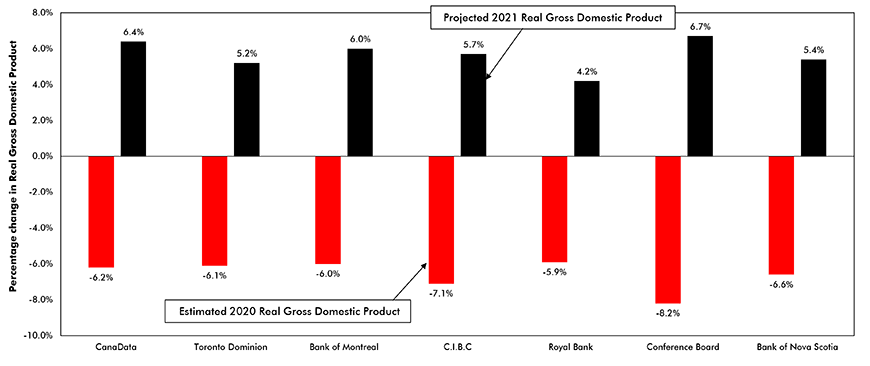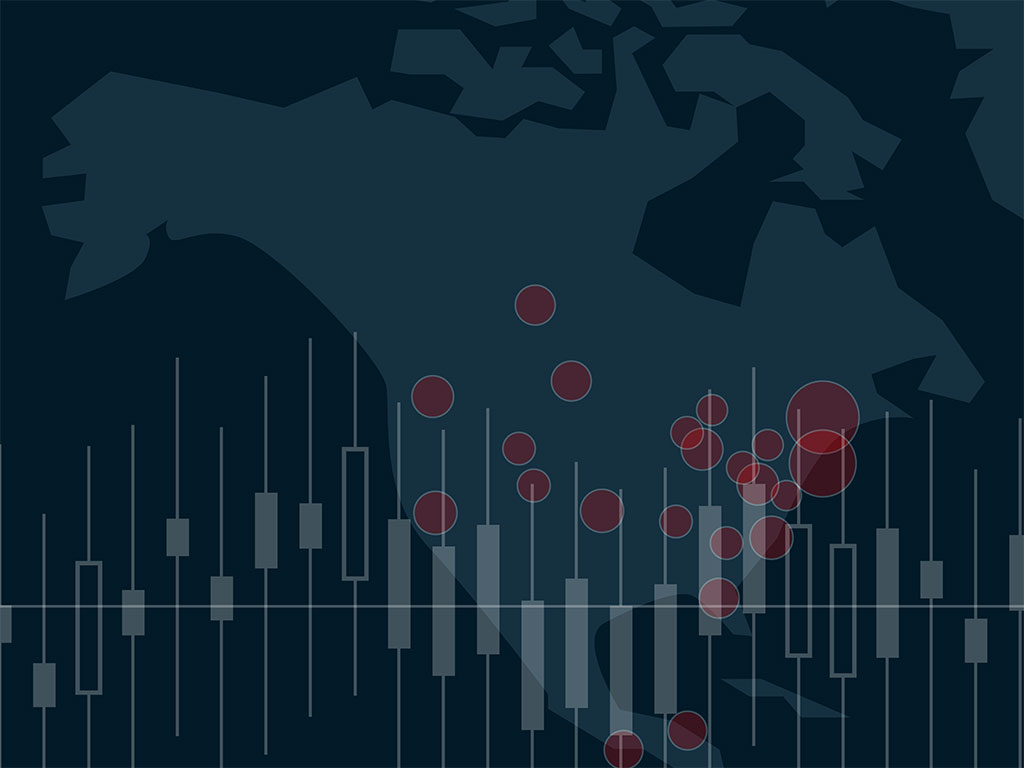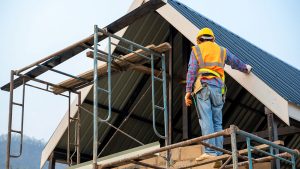In our last update, we were holding our breath as we attempted to gauge the impact of efforts to limit the spread of COVID-19 on the global economy, in general, and on domestic economic activity more specifically.
Global outlook — cautiously optimistic
With the easing of lockdowns in most countries and despite persisting COVID-19 incidences in many of them, there is a growing consensus that global economic activity is beginning to recover following the steepest one-quarter contraction since the Great Depression.
In its most recent (June 2020) economic outlook, the Organization for Economic Co-operation and Development notes that, consistent with the recent increase in its index of leading indicators, “the pandemic is starting to recede in many countries and activity is picking up. However, the recovery will not gain steam without more confidence”. In its World Economic Outlook Update, the International Monetary Fund projects that global growth will shrink by -4.9% in 2020 and rebound by +5.4% in 2021. Given the recent uptick in COVID-19 in several countries and no immediate prospect of an effective vaccine to prevent spread of the virus, the words “sluggish” and “bumpy” appear the most appropriate to describe the near-term growth path of the world economy.
The United States — the COVID curve is flattening–slowly
The premature relaxation of lockdowns in several U.S. states has contributed to the recent acceleration of COVID infections in our southern neighbour and major trading partner. After falling to 19,625 in early June, the seven-day moving average of new COVID-19 cases rose to a record 74,818 in the third week of July. While there is a risk that the infection rate may once again trend higher, according to the Centers for Disease Control and Prevention, the COVID-19 growth curve started to flatten in mid-July and has trended lower thus far in August.
The uptick in COVID-19 infections tempered the enthusiasm of consumers in July. Following a solid gain in June, the Conference Board’s Consumer Confidence Survey and the University of Michigan’s Index of Consumer Sentiment reverted in July. However, despite the cloud of uncertainty caused by the recent climb in COVID-19 infections, firms continued to hire at a healthy pace in July. Also, consistent with the strong gain in jobs, the NAHB/Wells Fargo National and Regional Housing Market Index posted a third straight increase in July. Two other forward-looking measures of economic activity, the Manufacturing ISM Report on Business and the Services ISM Report on Business also rose for a third consecutive month in July, while the Small Business Optimism Index of the National Federation of Independent Business recorded a 6.5% rise in June.
While the near-term outlook for the U.S. is obscured by the uncertain progression of COVID-19, individuals and public health authorities on both sides of the Canada-U.S. border have, over the past four months, gained a greater understanding of the virus and how to cope with it. Consequently, we expect that the depressing impact of the virus on labour force participation and consumer spending will gradually diminish, thereby contributing to stronger growth in the final quarter of this year through the first half of 2021. This outlook is reinforced by the prospect of a vaccine in the next twelve months.
Construction sparks Canada’s recovery
The solid 4.5% increase in Gross Domestic Product in May sends a strong signal that the Canadian economy started a much-anticipated recovery mid-way through the second quarter of the year. The major contributor to this increase was an unprecedented (since 1961) 18% increase in construction activity. Both non-residential and residential construction rebounded sharply, the former by 56% and the latter by 22%.
Other statistics reflecting activity in June and July suggest that the rise in May output was not a one month ‘dead cat’ bounce. Since May, total employment has increased by 1.7 million and the unemployment rate has dropped from 13.7% to 10.9%. Fuelled by the strong back-to-back gains in employment and a significant drop in interest rates, existing home sales jumped by 57% m/m in May, by 63% in June and there is preliminary evidence that sales continued to post strong gains in July.
Not surprisingly, housing starts rebounded from 164,000 units in April to 196,000 in May and 211,000 in June. Driven by the same factors as existing home sales, the dollar volume of motor vehicle sales leapt by 147% m/m in May, by 37% in June and a by further 6% in July.
The bottom line
Looking ahead, the effect of easing pent-up demand will likely cause home sales and hiring to moderate after unsustainably strong gains in May, June, and July. Nevertheless, growth should be supported by the gradual easing of measures to limit the spread of COVID-19 and the recent extension of the CERB program, together with measures encouraging firms to add staff such as the Canada Employer Wage Subsidy. This outlook for stronger growth heading into 2021 is reinforced by sustained gains in the Canadian Federation of Independent Business’ forward-looking Business Barometer and the IHS Markit Canada Manufacturing PMI.
John Clinkard has over 35 years’ experience as an economist in international, national and regional research and analysis with leading financial institutions and media outlets in Canada.
Comparison of Forecasts of Canadian Real Gross Domestic Product for 2020 and 2021

Chart: ConstructConnect — CanaData.










Recent Comments
comments for this post are closed